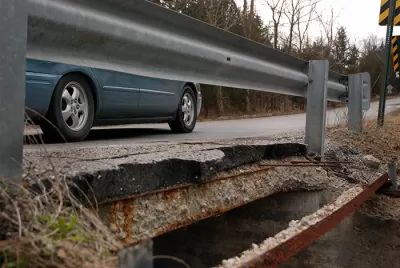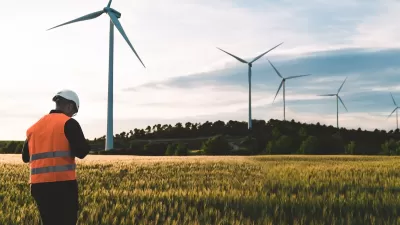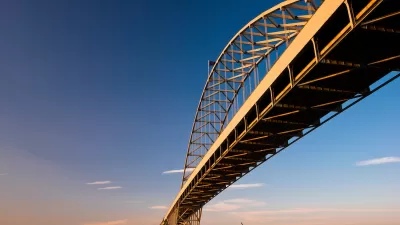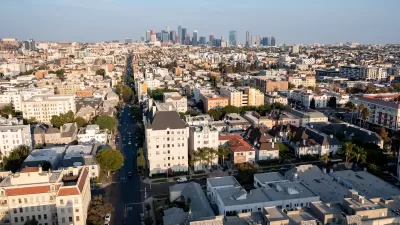Public spending is not high enough to keep up with normal decay, much less extreme weather events. Yet politicians focus on building new infrastructure instead of saving what we have.

All infrastructure eventually needs maintenance. Whether it's a water system, a bridge, or a school, there's a cost to keeping infrastructure running.
It can be useful to think of infrastructure investment in terms of net investment, meaning the amount of money spent on infrastructure after accounting for normal maintenance. The U.S. Bureau of Economic Analysis keeps track of this number, net public investment, as a percent of GDP. It has been trending down since the 1960s, the Bureau reports, and is near a record low. "The only years with lower levels were 1942–45, when the civilian economy was starved to fund the war effort," Doug Henwood reports in Jacobin.
This shrinking investment in infrastructure leaves less funding for disasters, updates, and new projects. As the country's income has increased, the percent of income invested in infrastructure has dramatically decreased. "To get back to that 2.6% average would mean an increase of $400 billion a year in public investment," Henwood writes.
FULL STORY: Why the United States Is Falling Apart

Planetizen Federal Action Tracker
A weekly monitor of how Trump’s orders and actions are impacting planners and planning in America.

Congressman Proposes Bill to Rename DC Metro “Trump Train”
The Make Autorail Great Again Act would withhold federal funding to the system until the Washington Metropolitan Area Transit Authority (WMATA), rebrands as the Washington Metropolitan Authority for Greater Access (WMAGA).

The Simple Legislative Tool Transforming Vacant Downtowns
In California, Michigan and Georgia, an easy win is bringing dollars — and delight — back to city centers.

The States Losing Rural Delivery Rooms at an Alarming Pace
In some states, as few as 9% of rural hospitals still deliver babies. As a result, rising pre-term births, no adequate pre-term care and "harrowing" close calls are a growing reality.

The Small South Asian Republic Going all in on EVs
Thanks to one simple policy change less than five years ago, 65% of new cars in this Himalayan country are now electric.

DC Backpedals on Bike Lane Protection, Swaps Barriers for Paint
Citing aesthetic concerns, the city is removing the concrete barriers and flexposts that once separated Arizona Avenue cyclists from motor vehicles.
Urban Design for Planners 1: Software Tools
This six-course series explores essential urban design concepts using open source software and equips planners with the tools they need to participate fully in the urban design process.
Planning for Universal Design
Learn the tools for implementing Universal Design in planning regulations.
Smith Gee Studio
City of Charlotte
City of Camden Redevelopment Agency
City of Astoria
Transportation Research & Education Center (TREC) at Portland State University
US High Speed Rail Association
City of Camden Redevelopment Agency
Municipality of Princeton (NJ)





























